The argument between bake and convection bake is a contentious one when it comes to pizza. All pizza aficionados strive for the ideal crust, gooey cheese, and perfectly roasted toppings.
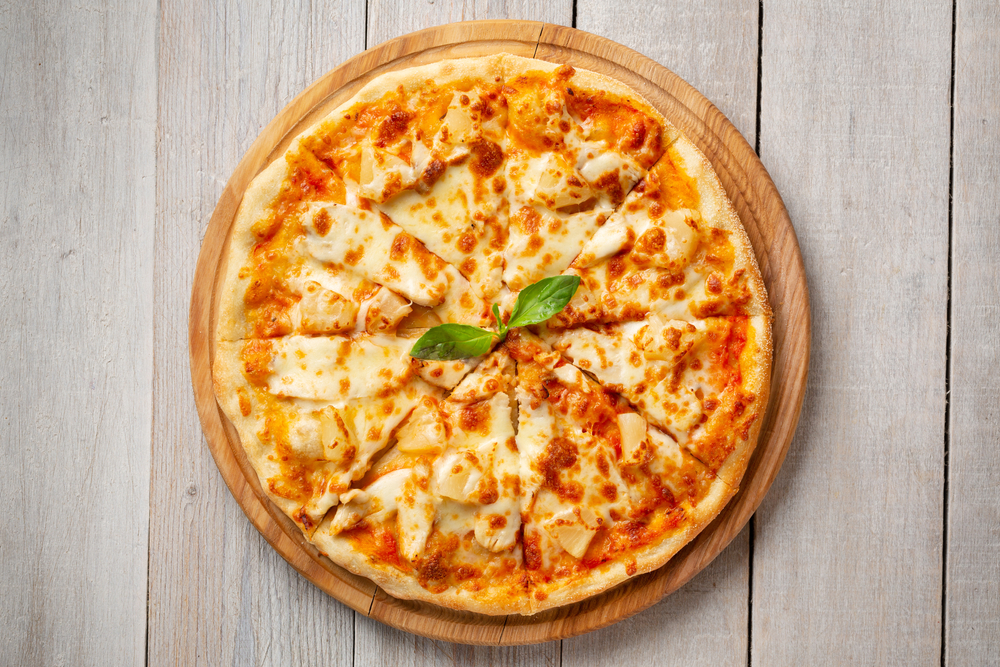
But how exactly do we do that? Should we use the convection bake setting instead of the conventional bake setting?
Both the bake and convection bake procedures have advantages and disadvantages. The heat emitted from the bottom of the oven is used to bake the pizza traditionally.
A slower cooking process and a softer crust are the outcomes. Contrarily, convection bake pizza is prepared in an oven with hot air being pumped around the pie.
The result is a crispier crust and a shorter cooking time. Convection baking’s intense heat, however, could result in the cheese burning or the toppings drying out.
Which approach is so superior? Let’s examine the specifics in more detail to find out.
Bake vs Convection Bake
When it comes to baking pizza, there are two main methods: regular baking and convection baking.
Each method has its own unique advantages and disadvantages, and it is important to understand the differences between the two in order to choose the best method for your pizza.
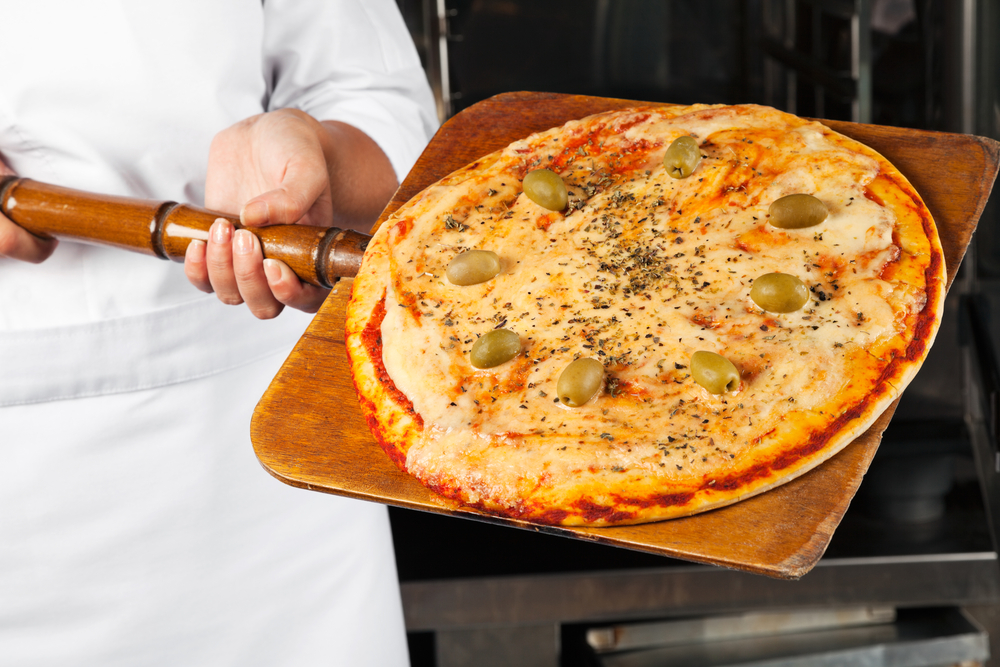
Definition
A regular bake is the traditional method of baking pizza in a conventional oven. This method uses heat from the bottom of the oven to cook the pizza.
On the other hand, convection bake is a newer method that uses hot air that circulates around the food to cook it evenly.
This method works well for thinner-crust pizzas as it provides a crispier crust with brown and well-roasted toppings.
Pros and Cons
Pros of Convection Bake
- Faster cooking time: Convection ovens cook food faster than regular ovens, reducing the overall cooking time of your pizza.
- Even heat distribution: The hot air circulation in a convection oven ensures that the heat is evenly distributed throughout the oven, resulting in a more evenly cooked pizza.
- Crispier crust: The hot air in a convection oven helps to create a crispy crust, which is perfect for thin crust pizzas.
Cons of Convection Bake
- Hot spots: Convection ovens can have hot spots, which can cause uneven cooking and lead to burnt or undercooked areas on your pizza.
- Middle rack: Convection ovens work best when the pizza is placed on the middle rack. This can be a problem if you need to cook multiple pizzas at once, as you may not have enough space on the middle rack.
- Baking sheet or foil: Convection ovens require the use of a baking sheet or foil to prevent the pizza from sticking to the oven rack.
Pros of Regular Bake
- No hot spots: Regular ovens do not have hot spots, which means that the pizza will cook evenly without any burnt or undercooked areas.
- No need for baking sheet or foil: Regular ovens do not require the use of a baking sheet or foil, which can save you time and money.
- More space: Regular ovens have more space than convection ovens, which means that you can cook multiple pizzas at once.
Cons of Regular Bake
- Longer cooking time: Regular ovens take longer to cook pizza than convection ovens, which can be a problem if you are in a hurry.
- Uneven heat distribution: Regular ovens do not have the same even heat distribution as convection ovens, which can result in unevenly cooked pizza.
In conclusion, both regular bake and convection bake have their own unique advantages and disadvantages.
When choosing the best method for your pizza, consider factors such as cooking time, heat distribution, and the type of crust you are using.
By understanding the differences between the two methods, you can choose the best method for your pizza and enjoy a delicious, perfectly cooked pie.
Pizza Baking Methods
When it comes to baking pizza, there are three main methods: conventional oven, convection oven, and pizza oven. Each method has its own advantages and disadvantages, and it’s important to choose the right one based on your preferences and available equipment.
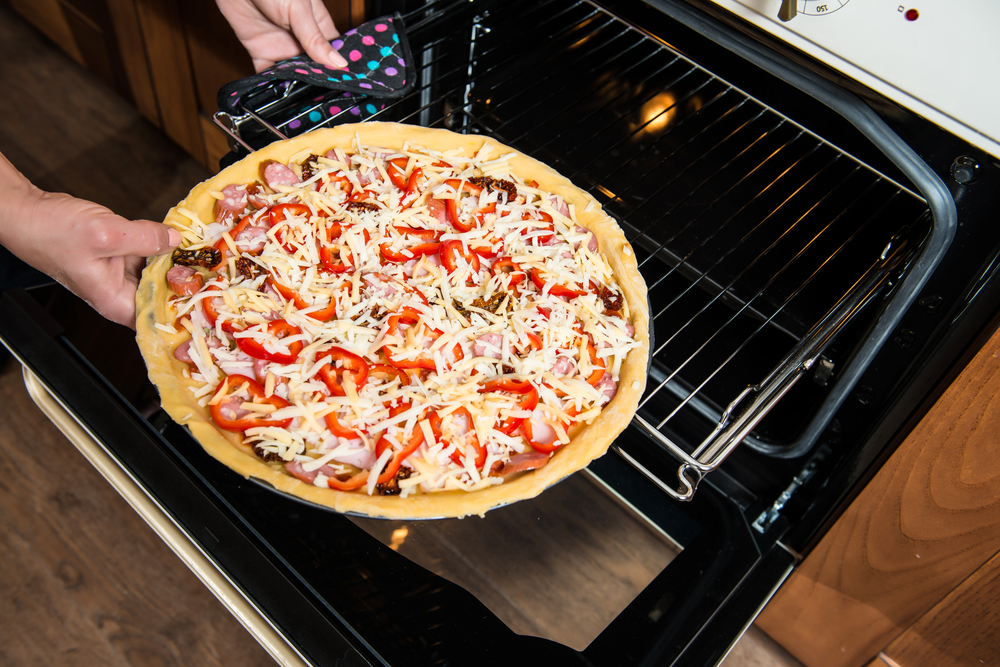
Conventional Oven
A conventional oven is the most common type of oven found in homes. It uses a heating element at the bottom of the oven to produce heat, which then rises and circulates throughout the oven.
When using a conventional oven to bake pizza, it’s important to preheat the oven to the appropriate temperature to ensure even cooking.
One advantage of a conventional oven is that it’s easy to use and doesn’t require any special equipment.
However, it can be difficult to achieve a crispy crust and evenly cooked toppings with this method.
To get the best results, it’s important to use a pizza pan or stone and to brush the crust with olive oil before baking.
Convection Oven
A convection oven uses a fan to circulate hot air throughout the oven, which results in even cooking and a crispy crust.
This method is ideal for baking pizza because it cooks the pizza quickly and evenly, resulting in a high-quality pizza.
To use a convection oven to bake pizza, it’s important to preheat the oven to the appropriate temperature and to use a pizza pan or stone.
It’s also important to keep an eye on the pizza while it’s cooking, as it can cook faster than in a conventional oven.
Pizza Oven
A pizza oven is a specialized oven that is designed specifically for baking pizza. It uses a wood-fired or gas-fired heating element to produce high temperatures, which results in a crispy crust and perfectly cooked toppings.
Pizza ovens are ideal for those who are serious about making high-quality pizza and are willing to invest in the equipment.
When using a pizza oven, it’s important to preheat the oven to the appropriate temperature and to use a pizza peel to transfer the pizza to and from the oven.
It’s also important to keep an eye on the pizza while it’s cooking, as it can cook very quickly.
Overall, the best method for baking pizza depends on your preferences and available equipment. Whether you use a conventional oven, convection oven, or pizza oven, it’s important to use the right techniques and equipment to achieve the best results.
With the right ingredients, cooking methods, and techniques, you can create a delicious pizza with a crispy crust and perfectly cooked toppings.
Temperature and Time
When it comes to baking pizza, temperature and time are crucial factors that can make or break your pizza.
In this section, we’ll discuss the temperature and time required for baking pizza in both conventional and convection ovens.
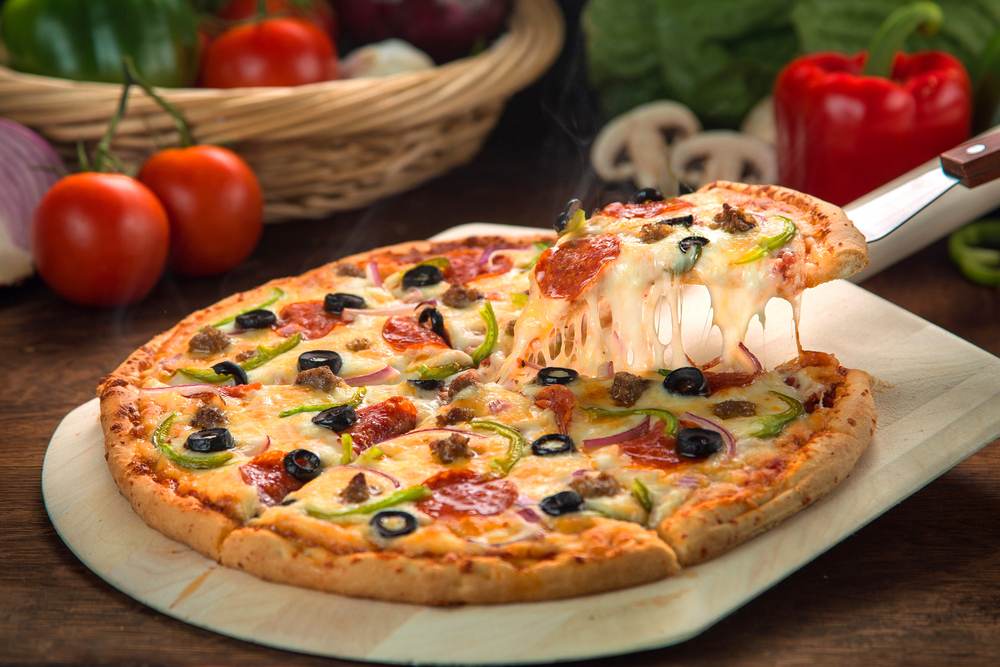
Conventional Oven
In a conventional oven, heat comes from an element located at the bottom of the oven, and the heat then rises and circulates around the food.
This type of oven is also known as a radiant oven. The temperature required for baking pizza in a conventional oven is typically between 425°F to 450°F.
It is recommended to preheat the oven for at least 20 minutes before baking.
The baking time for a pizza in a conventional oven can vary depending on the thickness of the crust and the toppings used.
On average, a pizza can take anywhere from 10 to 15 minutes to bake in a conventional oven. It is recommended to place the pizza on the middle rack to ensure even cooking and to avoid hot spots.
Convection Oven
In a convection oven, a fan circulates hot air throughout the oven, resulting in even heat distribution and faster cooking times.
The temperature required for baking pizza in a convection oven is typically between 375°F to 425°F. It is recommended to preheat the oven for at least 10 minutes before baking.
The baking time for a pizza in a convection oven is significantly less than in a conventional oven. On average, a pizza can take anywhere from 5 to 8 minutes to bake in a convection oven.
Due to the even heat distribution, there is no need to rotate the pizza during baking.
It is important to note that cooking times may vary depending on the thickness of the crust and the toppings used. It is recommended to keep an eye on the pizza during baking to ensure it does not burn.
Conclusion
In conclusion, the temperature and time required for baking pizza in a conventional and convection oven differ significantly.
While a conventional oven requires a higher temperature and longer baking time, a convection oven requires a lower temperature and shorter baking time.
It is important to consider the thickness of the crust and the toppings used when determining the baking time.
Pizza Stone vs Pizza Pan
When it comes to making pizza, one of the most important decisions you’ll have to make is whether to use a pizza stone or a pizza pan.
Both have their pros and cons, so it’s important to understand the differences before making your choice.

Pizza Stone
A pizza stone is a flat, round piece of ceramic, stone, or other heat-resistant material that you place in your oven to cook pizza. Here are some advantages of using a pizza stone:
- Crispy crust: Pizza stones absorb moisture from the dough, resulting in a crispy crust.
- Even cooking: Pizza stones distribute heat evenly, ensuring that your pizza cooks evenly.
- Versatility: Pizza stones can be used for more than just pizza. They’re great for baking bread, pastries, and more.
However, there are also some drawbacks to using a pizza stone:
- Fragility: Pizza stones can break if dropped or exposed to sudden temperature changes.
- Preheating time: Pizza stones take longer to preheat than pizza pans, so you’ll need to plan accordingly.
- Maintenance: Pizza stones need to be seasoned and cleaned properly to avoid cracking or discoloration.
Pizza Pan
A pizza pan is a round, flat pan with a raised edge that you use to cook pizza. Here are some advantages of using a pizza pan:
- Convenience: Pizza pans are easy to use and require no preheating time.
- Durability: Pizza pans are less fragile than pizza stones and can last for years with proper care.
- Versatility: Pizza pans can be used for more than just pizza. They’re great for making quiches, pies, and more.
However, there are also some drawbacks to using a pizza pan:
- Less crispy crust: Pizza pans don’t absorb moisture from the dough, resulting in a less crispy crust.
- Uneven cooking: Pizza pans can result in uneven cooking if not rotated during baking.
- Sticking: Pizza dough can stick to pizza pans if not properly greased or seasoned.
In summary, both pizza stones and pizza pans have their advantages and disadvantages. Ultimately, the choice comes down to personal preference and the type of pizza you want to make.
If you want a crispy crust and don’t mind the extra maintenance, a pizza stone might be the way to go. If you want convenience and versatility, a pizza pan might be a better choice.
Frozen Pizza
When it comes to frozen pizza, many people wonder whether they should use bake or convection bake. The good news is that both methods can produce a tasty pizza, but there are a few differences to consider.
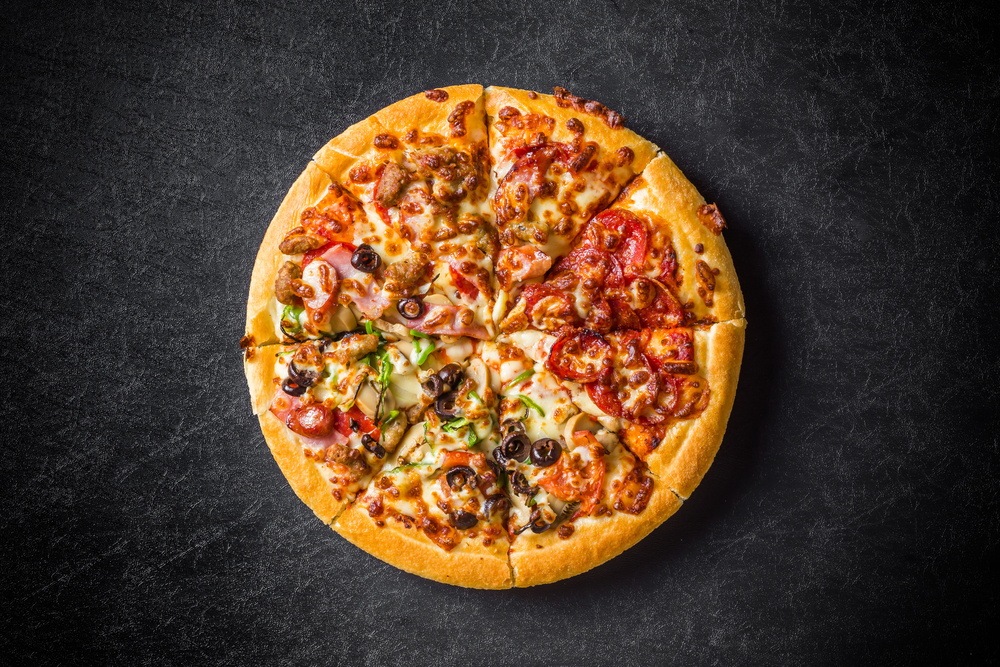
First, it’s important to note that not all frozen pizzas are created equal. Some are designed specifically for convection ovens, while others are meant to be baked in a traditional oven. Be sure to check the packaging for any specific instructions.
If you’re using a convection oven to cook your frozen pizza, keep in mind that it may cook faster than in a regular oven.
We recommend reducing the cooking temperature by 25 degrees and reducing the cooking time by 25% to get a perfectly cooked frozen pizza from the convection oven.
As always, refer to the manufacturer’s instructions for the recommended temperature setting.
Another benefit of using a convection oven for frozen pizza is that the hot air circulation can help to cook the pizza more evenly.
This can be especially helpful if you’re dealing with a thicker crust or toppings that tend to cook unevenly.
However, if you’re using a regular oven, don’t worry – you can still get a great pizza. Just be sure to preheat the oven and place the pizza on the middle rack for even cooking.
You may need to adjust the cooking time slightly based on your oven and the thickness of the pizza.
In summary, whether you use bake or convection bake for frozen pizza will depend on your oven and the specific pizza you’re cooking.
Both methods can produce a delicious pizza, so don’t be afraid to experiment and find what works best for you.







Add comment